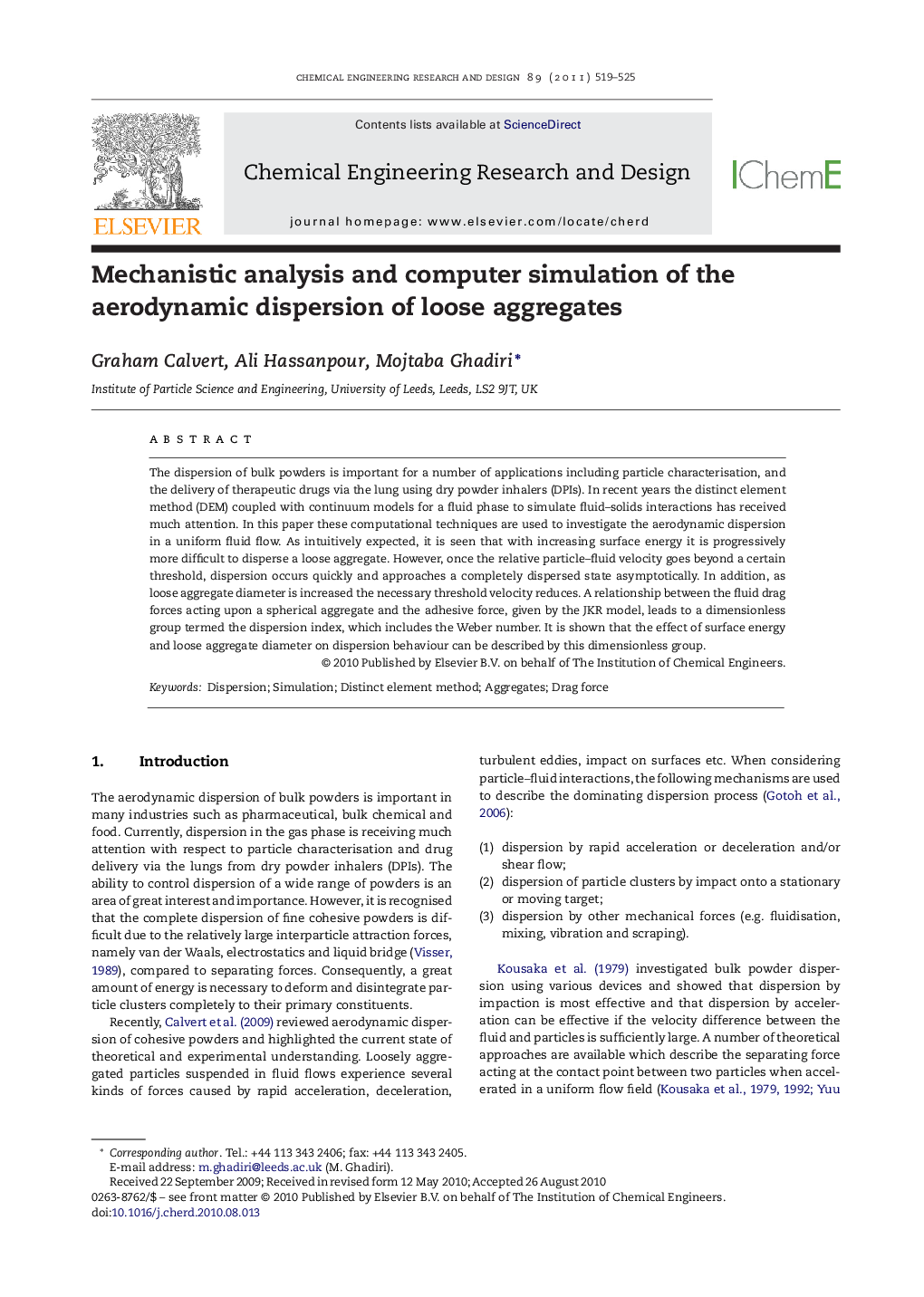| کد مقاله | کد نشریه | سال انتشار | مقاله انگلیسی | نسخه تمام متن |
|---|---|---|---|---|
| 621095 | 882534 | 2011 | 7 صفحه PDF | دانلود رایگان |

The dispersion of bulk powders is important for a number of applications including particle characterisation, and the delivery of therapeutic drugs via the lung using dry powder inhalers (DPIs). In recent years the distinct element method (DEM) coupled with continuum models for a fluid phase to simulate fluid–solids interactions has received much attention. In this paper these computational techniques are used to investigate the aerodynamic dispersion in a uniform fluid flow. As intuitively expected, it is seen that with increasing surface energy it is progressively more difficult to disperse a loose aggregate. However, once the relative particle–fluid velocity goes beyond a certain threshold, dispersion occurs quickly and approaches a completely dispersed state asymptotically. In addition, as loose aggregate diameter is increased the necessary threshold velocity reduces. A relationship between the fluid drag forces acting upon a spherical aggregate and the adhesive force, given by the JKR model, leads to a dimensionless group termed the dispersion index, which includes the Weber number. It is shown that the effect of surface energy and loose aggregate diameter on dispersion behaviour can be described by this dimensionless group.
Research highlights▶ We have found that aggregate dispersion occurs once the relative aggregate-fluid velocity reaches a threshold, below which the aggregate manages to accelerate and escape integral damage, and above which it starts disintegrating. ▶ A dimensionless group termed Dispersion Index (DI), which includes the Weber number, is found to describe the dispersion behaviour well. Particle breakage due to fluid drag has a different mechanisms as compared to that due to impact, and hence the functional group describing the breakage are slightly different. ▶ The dispersion behaviour is dependent on aggregate size. Surface erosion is more prevalent in larger aggregates due to skin drag.
Journal: Chemical Engineering Research and Design - Volume 89, Issue 5, May 2011, Pages 519–525